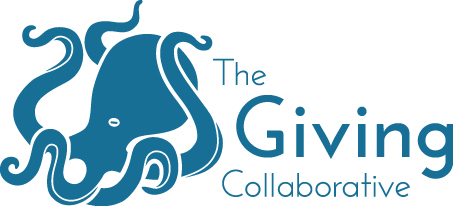Part 1 of this series focused on the need to identify and recruit potential capital campaign chairs several years in advance of a campaign. If they are not already serving as leadership volunteers in your philanthropy program, you can take the following steps:
- Invite these prospective campaign chairs and leaders to become involved in your program.
- Teach best practices in donor cultivation, solicitation, and stewardship.
- Emphasize the vital importance of listening to donors to better understand their interests and motivations.
- Roleplay solicitations to demonstrate calling for an appointment, presenting your case, working as a team, making the ask, and dealing with objections.
- Have them accompany you on solicitation visits so they can observe you in action, participate in the conversation, and become comfortable with the process.
- When they are ready, allow them to take the lead during the visit, and then critique their performance afterward.
- Evaluate their potential as leadership volunteers and donors.
- Strategically groom them for a leadership role.
Once this is underway, you should congratulate yourself for taking this critical step in building a stable of potential campaign leaders! The next vital step is to determine if you have enough top-level donors and prospects with the capacity, interest, and motivation to support your future capital campaign. After all, your new volunteer leaders will need to have people and organizations to solicit.
As an effective Chief Advancement/Development Officer, you are no doubt working continually to expand the number of major gift donors and inspire them to increase the size and impact of their gifts. You are also using your annual fund programs, special events and other initiatives to build a strong pipeline of future major-gift donors.
But how do you know if you’ll have enough of these donors to result in a successful campaign? And just how many is enough?
This is the perfect time to create that traditional campaign tool known as the Chart of Gifts. The Chart will help you determine the appropriate gift levels and number of donors at each level that are needed to achieve your goal. These levels and the number of gifts needed at each one should be adjusted based on the quantity and capacity of your donors and prospects and can be re-adjusted throughout a campaign. Once your campaign has reached its successful conclusion, it is unlikely that your results will match your original Chart of Gifts. But it is interesting to compare the projected numbers with the actual gifts received.
A sample gift chart for a $20 million campaign appears below:
| # of Gifts
Needed at each Level |
Gift
Levels |
Level
Totals |
Cumulative
Totals |
| 1 | $5,000,000 | $5,000,000 | $5,000,000 |
| 1 | $2,500,000 | $2,500,000 | $7,500,000 |
| 3 | $1,000,000 | $3,000,000 | $10,500,000 |
| 5 | $500,000 | $2,500,000 | $13,000,000 |
| 10 | $250,000 | $2,500,000 | $15,500,000 |
| 15 | $100,000 | $1,500,000 | $17,000,000 |
| 20 | $50,000 | $1,000,000 | $18,000,000 |
| 40 | $25,000 | $1,000,000 | $19,000,000 |
| 50 | $10,000 | $500,000 | $19,500,000 |
| Many | < $10,000 | < $500,000 | $20,000,000 |
| 145+ Gifts Needed |
The number of gifts at each level is based upon the following campaign metrics:
- The lead gift typically ranges from 15% to 30% of the campaign goal; the chart above projects 25%.
- The top ten gifts typically account for 50% to 75% of the goal; the chart projects 65%.
- 90/10 Rule: 90% of the money to be raised usually comes from 10% of the donors; larger campaigns are often seeing 95/5. The chart projects that $18 million to $19 million is needed from 55 to 95 donors.
The impact of leadership gifts cannot be emphasized enough – a campaign is extremely unlikely to succeed without them. You can replace a $5 million gift with two additional contributions of $2.5 million, but it becomes more challenging to replace it with five additional gifts of $1 million, and highly unlikely to replace it with 50 gifts of $100,000. If those top gifts just aren’t out there, you may need to lower your goal. One of the key functions of a planning/feasibility study conducted in advance of a campaign is to identify the dollar size and number of significant gifts, who have indicated an interest in making them, and to project a realistic goal for a capital campaign.
The chart shows that you will need approximately 145 gifts ranging from $10,000 to $5 million, along with many smaller gifts, to achieve the goal of $20 million. But your prospect list must contain significantly more names because you typically must solicit four people in order to obtain a single contribution of $100,000 or more. Each gift of less than $100,000 may require that three prospects be asked for support. Donors who pledge gifts for less than they were asked help to reduce the number of prospects needed at the chart’s lower levels.
You can build your own Chart of Gifts using a spreadsheet with formulas that allow you to easily adjust the gift levels and the number of gifts needed at each level. You can quickly produce one on paper or, in a pinch, you can even make one on the back of a napkin. Once completed, the Chart data can be used to draw a gift pyramid as a visual aid to share with donors.
Assemble your leadership-level donor prospect list as you would any major donor prospect list:
- Depending on the nature of your organization, ask alumni, professors, physicians, grateful patients, patrons, members and clients for recommendations.
- Request suggestions from current and former board members, volunteers, corporate and community leaders, major donors, and others.
- Consult with volunteers and donors from previous capital campaigns.
- This is a great first assignment to involve your newest leadership volunteers.
- Look for leads using wealth screening software and services.
- Every person you ask should be counted as a successful contact/touch/outreach toward your moves-management goals.
- Additional names will be identified during the capital campaign planning study.
As suspects and prospects are identified, utilize your regular techniques to contact them and to share information about your organization:
- Ask board members and others listed above to make introductions.
- Begin the cultivation process with each prospect.
- Invite them to special events, receptions, open houses, educational programs, private or small group meetings with the CEO, house parties.
- Share publications and direct them to your website.
- Encourage them to follow your organization on its social media platforms.
- When appropriate, invite these prospects to get involved and engaged in a meaningful way with your organization.
Your current philanthropy program probably includes all or most of the steps above. If so, take the time to review what you are doing and focus on how to make any needed improvements. If your program only includes some of the steps, the good news is that you have one to two years to strategically plan how to implement them so that you are as prepared as possible to initiate a successful capital campaign.


About The Author: Richard Solomon
Rich is The Giving Collaborative’s Vice President and Senior Consultant and an original member of the TGC team. He is an accredited fundraiser with 29 years of experience in managing successful philanthropy programs. He previously served as Executive Director of the New England Sinai Hospital Foundation in Stoughton, Massachusetts, where he led the philanthropy program for nine years. Rich is a past President and current board member of the New England Association for Healthcare Philanthropy (NEAHP). He previously served on the Board of Directors of the Association for Healthcare Philanthropy (AHP) and as a Trustee of the AHP Foundation. Rich also serves on the Board of Directors of Swim Winchester and is directing the organization’s feasibility study for a $15 million capital campaign.
More posts by Richard Solomon